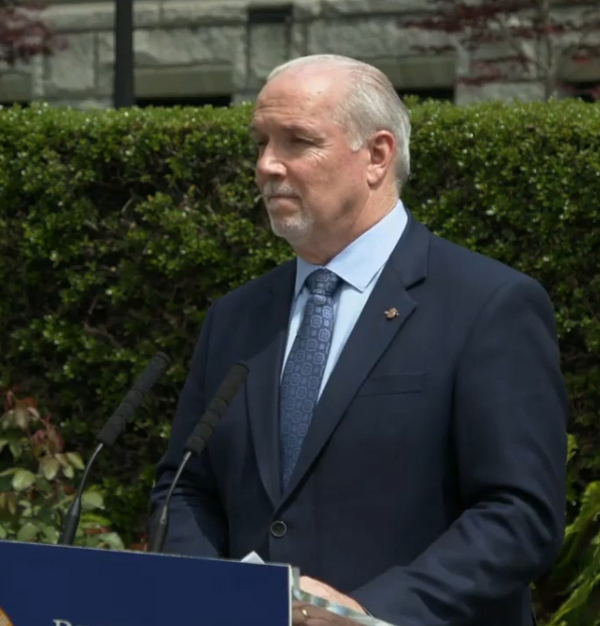
Wednesday June 3, 2020 ~ VICTORIA, BC
by Mary Brooke ~ West Shore Voice News
Canadians could enjoy a four-day work week—and actually work fewer hours—without giving up income or sacrificing their living standards if worker productivity increases by two percent per year for the next decade, finds a new study by the Fraser Institute, an independent Canadian public policy think-tank headquartered in Vancouver.
The idea of a four-day work week is not new. It’s been around since the 1980s, seeing hybrids such as every-second Friday off, or having a slower Friday by allowing casual wear in the workplace on that day, or job-sharing.
All of those hybrids have been based on maintaining the traditional five-day work week as the core functionality of the employment system. Anything less was thought to contribute to losses for businesses and employees in terms of productivity or income.
The recent experience during the COVID-19 pandemic of flexible work arrangements — including working primarily from home — has given resurgence to the idea of the work world (and school system for that matter) being something more than Monday to Friday, 9 to 5.
Premier open to innovative ideas:

Today Premier John Horgan said he found it unusual to be remarking with favour about a Fraser Institute report, as the organization is normally right of centre in its political views. “Rare is the day,” is how he put it.
That’s because the Fraser Institute says it is non-partisan but for many is seen as conservative and right-leaning in its political influence. Over the years, Fraser Institute ranking analysis of K-12 schools in BC has been thought to unduly skew the true accomplishments of schools in various ways and regions.
But Horgan said he thought the feasibility of a four-day work week by 2030 was a good idea and that he welcomes more ideas. He encourages groups and thinkers to “bring forward good ideas” toward advantages and opportunities for the reshaping of the BC economy and society. “Nothing should be off the table. Anyone who has an idea, we want to hear about it,” said Horgan today June 3 in his weekly media availability in Victoria.
Fewer hours, same living standard:

“In light of the COVID lockdown, there’s been a lot of talk about a possible four-day work week in Canada, but to achieve a four-day work week where we actually work fewer hours while at the same time maintaining our current living standards, we need to be more productive,” said Steven Globerman, a Fraser Institute senior fellow and author of Reducing the Workweek Through Improved Productivity.
The study finds that if worker productivity grew by two percent per year from 2018 to 2030, Canadians could work four days per week—and not just longer work days—with no loss of living standards.
In fact, with two percent productivity growth per year, workers would even enjoy an inflation-adjusted cumulative 1.5 per cent increase in income, the Fraser Institute report states.
Annual productivity increase:
The study released today shows that from 2010 to 2016, productivity in Canada increased by 1.05 percent per year, but looking back through recent history, two percent annual productivity growth rates were common in earlier decades.
“If governments pursue policies that encourage entrepreneurship and innovation, worker productivity will rise and Canadians will be able to enjoy more leisure time,” Globerman said.
NDP government is already on it:
Innovation has been a notable plank in the Horgan government’s economic strategy in the last few years, especially in the bio-tech, digital technology and climate change sectors.

STEM (Science, Technology, Engineering and Math) education themes are in place in all levels of education in the province. Another flavour of STEM is STEAM, which includes Art in the spectrum. And there is also STREAM which includes an emphasis on literacy, with the ‘R’ for reading and wRiting.

Entrepreneurs and small businesses have been offered supports during COVID-19 including the BC Emergency Benefit for Workers (which filled in a gap in the federal Canada Emergency Response Benefit) as issued to 533,764 British Columbians in May. That was administered through the Ministry of Municipal Affairs and Housing.
And most recently there has been a commercial rent support initiative in BC (with a backstop that commercial tenants cannot be evicted during COVID-19) that further works to maintain ties between commercial landlords and business tenants as part of economy recovery. That was announced just this week by BC Finance Minister Carole James, saying it fills a gap in the federal rent relief program and applies to businesses who have lost at least 70% of their normal revenue.
Working from home:

Many tech-based industries in particular sent their employees home during COVID-19 to work remotely. Some major companies such as Twitter say their employees can continue working at home if they choose, even once the economy gets further along with the ‘new normal’.
Many consultants and entrepreneurs have worked from home for years already. Thanks to COVID, that work mode may finally be losing its stigma as being less professional or being thought of as less plugged-in to the mainstream regardless of the productivity or contribution by workers or business people in that sector.
During COVID-19’s first phase of extreme self-isolation at home, those who had technology and the skills and/or type of job that could be done from home began to be seen as a distinguished sector, one of good fortune.



